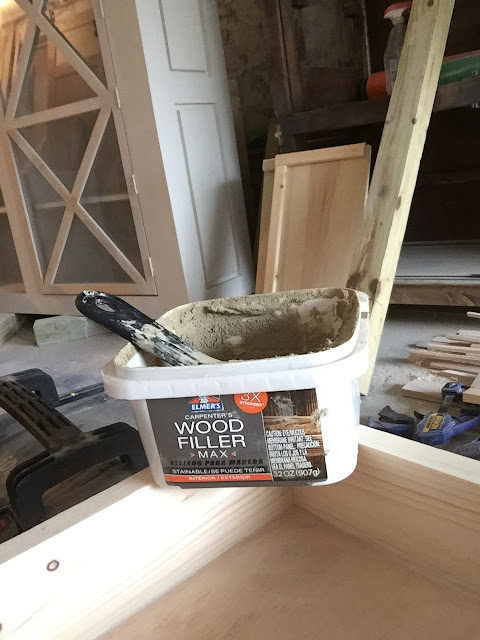We often run into a scenario during the restoration process where the integrity of the wood but be repaired. Of course with time, wood will gain character however some "character" is more wear and tear. Wood that has chipped or splintered, small holes that might have been caused by one thing or another...I could go on and on.
Next on the agenda is to apply the wood filler. I like using Elmers. It's strong, mixes well with water and is a strong filler. Another good filler is Dap. A little wetter consistency than Elmer's but dries in a very similar way. Both sand well and are stainable and paintable. Take a putty knife and apply the wood filler to the area being repaired. Make sure you don't put too much on but enough as to when you spread the filler, the effected area is covered. Place aside and allow to dry. Normal suggested drying time is about an hour, however I find it dries a lot faster. you'll know it's dry as it will have a stucco like consistency.
Once dry, we take a piece of 220 Grit Sandpaper and sand down the putty to a flat surface. Run your fingers over the sanded surface. When you achieve the desired consistency, you are ready roll.
After you wipe off any dust and debris, and clean the surface, you are ready to paint or stain!









No comments:
Post a Comment